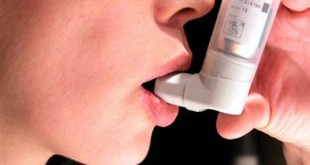Asthma action plan
An asthma action plan is a written plan that tells you on how to treat your asthma on a daily basis. Asthma Action Plan helps you to handle with sudden increases in your asthma symptoms. The plan includes what medicine is needed every day, what steps to be taken during an asthma attack, and when you should call a doctor or seek emergency treatment.
What action you should take?
Your asthma severity is grouped into three zones ie. green, yellow and red. Your action plan is based on zones of asthma severity defined by symptoms or your personal best peak expiratory flow (PEF). Get your doctor’s advice on your current asthma status and action to be taken if your asthma status getting bad.
- Green zone
Green zone means you have a good asthma control. Your peak expiratory flow is 80% to 100% of your personal-best measurement. You should have no asthma symptoms when you are in the green zone. And you do not need quick-relief treatment. Everybody should be aimed to be in the green zone every day.
Keep taking daily controller-medicine if you have it. You do not need quick-relief treatment. You can carry on with your current medication and come to your doctor at usual follow-up.
- Yellow zone
Yellow zone means caution. You are in the yellow zone of your asthma action plan if your peak expiratory flow is 50% to 79% of your personal-best measurement. You may not have any symptoms, but your lung function is reduced. When you have symptoms, they may be mild to moderate, or they may keep you from your usual activities or disturb your sleep.
Treat them at home using the medicines specified in your asthma action plan. Your action plan should state which quick-relief medicines you need to take, how much to take, and when to take them. You can expect some relief of your asthma symptoms. Seek medical help if the symptoms do not go away soon after you take the prescribed medicine or if the symptoms become worse.
- Red zone
- Red zone means you are possibly in danger. You are in the red zone of your asthma action plan if your peak expiratory flow is less than 50% of your personal-best measurement. Your symptoms may be severe, and you may have extreme shortness of breath and coughing.
You need to seek medical help immediately. While you are seeking emergency help, follow your action plan and take your medicines as directed.
You may need emergency treatment or admission to a hospital. After a severe asthma attack, you may need a short treatment using corticosteroids by mouth to bring your symptoms under control.
Talk to your doctor
The best strategy for avoiding and treating asthma attacks is being able to recognize an attack and know what to do. Discuss with your doctor about :
- Your triggers. Asthma triggers are substances that can cause an attack, such as dust or cigarette smoke. Avoiding your triggers can help reduce your risk of an attack and reduce its severity.
- Your symptoms. In general these include a drop in your peak expiratory flow (PEF) and more severe coughing, wheezing, shortness of breath, and tightness in your chest. The symptoms may vary from one person to another.
- Which quick-relief medicines you need to take and how to take them.
- How to evaluate whether your quick-relief medicines are working.
- When emergency care is needed. If you have a large drop in PEF, your quick-relief medicines are not working, or you are very short of breath, you may need emergency care. Your doctor will help you learn about these signs.
If you do not follow your action plan or do not use the specified medicines it specifies, you may have a worse or longer asthma attack. You may have to seek emergency care or go to the hospital.
Always keep your asthma action plan where it can be easily found. Remember to take the asthma diary and asthma action plan to each doctor visit so the doctor can assess how well the treatment plan is working.
Questions:
- Green Zone means you have no asthma symptoms and able to do usual activities and sleep without coughing, wheezing, or difficulty breathing.
- Yes
- No
- Answer: Yes
- You need to seek emergency treatment if your symptoms not relief after taking the medication as instructed in your action plan.
- Yes
- No
- Answer: Yes
- You are in the Red zone if your peak expiratory flow is less than 50% of your personal best measurement.
- Yes
- No
- Answer: Yes
 PENDIDIKAN PESAKIT Kementerian Kesihatan Malaysia
PENDIDIKAN PESAKIT Kementerian Kesihatan Malaysia
